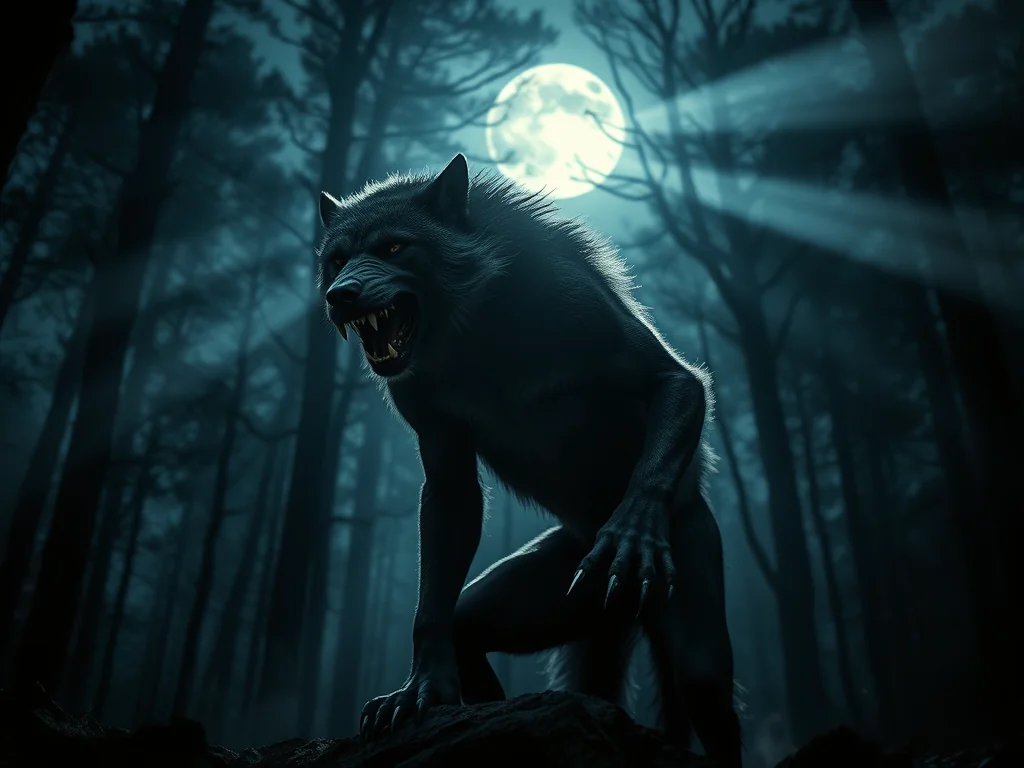Werewolves, often depicted as humans capable of transforming into wolves or wolf-like creatures, are deeply rooted in folklore across various cultures. This mythological archetype has fascinated humans for centuries, with werewolves representing themes of fear, transformation, and the duality of human nature. This article explores the origins, evolution, and cultural significance of werewolves, examining their presence in folklore, literature, and modern popular culture.
Origins of the Werewolf Myth
The werewolf, or lycanthrope, myth traces back to ancient civilizations where wolves and humans had complex, often adversarial, relationships. Wolves, as powerful predators, symbolized danger and wilderness, which made them natural subjects for mythology.
Ancient Greece and Rome
The earliest references to werewolves appear in Greek mythology, particularly in the tale of Lycaon, a king transformed into a wolf by Zeus as punishment for his impiety and cannibalism. This myth gave rise to the term “lycanthropy”, derived from the Greek words “lykos” (wolf) and “anthropos” (man). In Roman culture, the poet Ovid recounted a similar transformation in his work Metamorphoses, underscoring the ancient association between werewolves and punishment for moral failings.
Norse Mythology
In Norse mythology, werewolves also appeared prominently, often associated with berserkers—warriors who wore animal skins and channeled the spirits of wild creatures, becoming almost supernaturally fierce in battle. The Völsunga Saga, an Icelandic saga, tells the story of father and son warriors Sigmund and Sinfjotli, who don wolf skins and transform into wolves to gain strength and ferocity.
Eastern European Folklore
Eastern European werewolf legends are among the most well-known, likely due to the abundance of wolf populations and the region’s deeply rooted folklore. In Slavic mythology, werewolves were often created through curses or as punishment for immoral acts. Many Slavic and Baltic cultures believed that people could become werewolves by donning a wolf’s pelt or by consuming a specially prepared potion, highlighting the transformative symbolism associated with wolves.
The Medieval Period: Witchcraft and Superstition
During the Middle Ages, the fear of werewolves intensified, merging with the widespread hysteria surrounding witchcraft and supernatural forces. The medieval Christian Church viewed werewolves as symbols of heresy and evil, associating them with the devil.
Werewolf Trials
Werewolf trials, much like the more famous witch trials, swept through Europe in the 15th to 17th centuries, leading to widespread accusations, trials, and executions. People accused of lycanthropy were often subjected to extreme torture until they “confessed” to their alleged transformations. Notable cases, such as Peter Stumpp, a German farmer executed in 1589, solidified the link between werewolves and evil. Stumpp was accused of making a pact with the devil and transforming into a wolf to commit various crimes, a narrative that reinforced the idea of werewolves as supernatural agents of chaos.
The Werewolf and the Full Moon
The association between werewolves and the full moon, now a staple of werewolf lore, did not fully develop until later in history. While there is some suggestion that ancient people believed lunar phases affected human behavior, the idea of the full moon triggering werewolf transformations became popularized primarily through literature and film in the 19th and 20th centuries.
Werewolves in Literature and Folklore
The fascination with werewolves persisted into the modern era, leading to their frequent appearances in European folklore and later in literature, where they evolved from symbols of evil to complex characters representing inner turmoil.
French Literature and “The Loup-Garou”
In French folklore, the term “loup-garou” describes a werewolf, often seen as a cursed individual or someone who has sinned. French literature in the 16th and 17th centuries featured tales of the loup-garou, expanding on the werewolf’s duality as both human and monster. This legend migrated to French-speaking colonies, particularly Quebec, where tales of the loup-garou became a staple of Canadian folklore.
Gothic Literature
During the 19th century, the Gothic literary movement embraced supernatural themes, and werewolves found a place alongside vampires, ghosts, and other creatures of the night. Novels like “The Were-Wolf” (1896) by Clemence Housman and “Wagner the Wehr-Wolf” (1847) by George W.M. Reynolds explored the psychological aspects of transformation, fear, and morality. These works often presented werewolves as tragic figures, torn between their humanity and the uncontrollable beast within.
Modern Depictions in Film and Literature
In the 20th and 21st centuries, werewolves became iconic figures in popular culture, appearing in horror films, fantasy novels, and even comic books. Modern depictions of werewolves reflect both traditional elements and new interpretations, shaping how audiences understand these creatures.
Early Werewolf Films
The werewolf made its film debut in “The Werewolf” (1913), a silent film now lost, which depicted Native American folklore of shape-shifting. However, it was “Werewolf of London” (1935) and “The Wolf Man” (1941) that popularized the classic image of the werewolf in Hollywood. Starring Lon Chaney Jr., The Wolf Man introduced several tropes that would become standard for werewolf lore, including the vulnerability to silver and the transformation under a full moon.
Literature and Urban Fantasy
In literature, werewolves have moved beyond horror to become prominent characters in urban fantasy and paranormal romance genres. Series like “The Southern Vampire Mysteries” by Charlaine Harris (adapted into the TV series True Blood) and “The Twilight Saga” by Stephenie Meyer feature werewolves as central characters, often in roles that challenge the traditional monster image. These modern depictions focus on the werewolf’s struggle to balance their human emotions and relationships with the animalistic nature of their transformations.
Werewolves in Comic Books and Video Games
Werewolves have also appeared in comic books and video games, where they are often depicted as formidable, heroic characters. In the Marvel Comics universe, werewolves are represented by characters like Werewolf by Night, while the video game franchise The Elder Scrolls includes lycanthropy as a transformative power that players can harness. These portrayals emphasize the physical strength and agility of werewolves, adding new layers to their symbolic value.
Cultural Interpretations of the Werewolf
The werewolf is a symbol of the duality of human nature, embodying the struggle between civilization and savagery. This theme has led to multiple interpretations across cultures, reflecting fears, desires, and moral questions.
Psychological Symbolism
Werewolves are often seen as symbols of repressed emotions, particularly anger and lust, which can break free under certain circumstances. Psychologists have analyzed werewolves as representations of the id—the instinctual part of the human psyche. This interpretation has informed the psychological horror genre, where werewolves serve as cautionary symbols of unchecked impulses.
Social and Cultural Commentary
Werewolves are sometimes portrayed as outsiders or marginalized figures, reflecting broader social themes. For example, in some works, werewolves symbolize racial or cultural otherness, forced to hide their true nature to live within mainstream society. This perspective provides a framework for exploring themes of prejudice, discrimination, and the search for identity.
Duality and Transformation
Werewolves embody the concept of duality, representing both human and animal characteristics, which can create tension between the intellect and instinct. This duality resonates with the broader human experience, where individuals grapple with conflicting aspects of their identity. In this way, werewolves serve as metaphors for personal transformation, self-discovery, and the quest for balance.
The Evolution of Werewolf Mythology in Popular Culture
The evolution of werewolf mythology reflects changing societal values and psychological insights. While early portrayals emphasized the terror and unpredictability of werewolves, modern depictions explore more nuanced themes, often portraying werewolves as complex characters who navigate moral dilemmas.
The Werewolf in Modern Media
Today, werewolves appear in a wide range of media, from horror and fantasy films to television series and video games. Television shows like “Teen Wolf” (2011–2017) and “Being Human” (2008–2013) depict werewolves with sympathetic storylines, focusing on themes of friendship, identity, and belonging. In these series, werewolves are often portrayed as individuals struggling to control their transformations, seeking acceptance within society.
The Influence of Modern Psychological Interpretations
The psychological interpretation of werewolves has influenced their portrayal in contemporary culture, with writers and filmmakers exploring werewolves as characters with complex emotions and struggles. The theme of “the monster within” aligns with a modern understanding of psychological conditions, where transformation reflects internal struggles with mental health or trauma.
Werewolves as Cultural Icons
Werewolves have become cultural icons, standing alongside vampires, zombies, and other supernatural figures in the public imagination. Their enduring popularity reflects humanity’s fascination with transformation, fear, and the mysteries of the natural world. Werewolves serve as powerful symbols that explore complex themes, from personal identity to societal alienation.
Summary
Werewolves have captivated human imagination for centuries, evolving from ancient mythological figures to modern cultural icons. Originating in ancient Greek, Roman, and Norse mythology, werewolves have endured through medieval superstition, Gothic literature, and Hollywood horror, continuously adapting to reflect humanity’s evolving psychological and social perspectives. As symbols of duality, werewolves provide insight into the human psyche, embodying themes of inner conflict, transformation, and the struggle for self-acceptance. From folklore to modern media, the myth of the werewolf remains a powerful and versatile narrative that continues to engage audiences worldwide.

